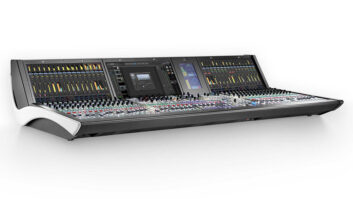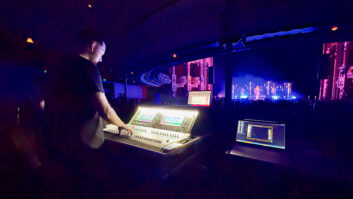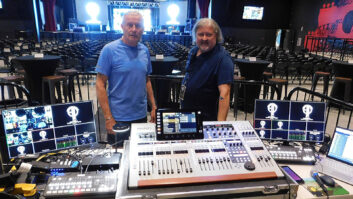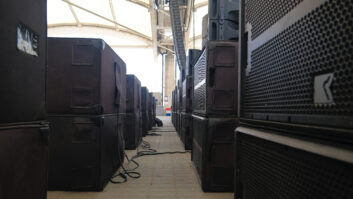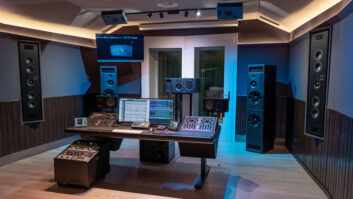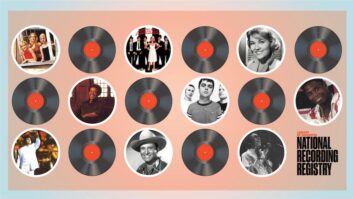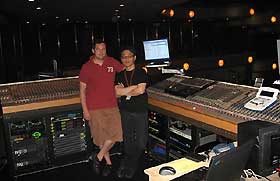
New musical Dancing Shadows made its world premiere on July 8 in South Korea, featuring a British and Korean creative team and including a 97-input Cadac J-Type live production console supplied by Seoul Sound.
Richard Brooker (left) and Ki-Young Kim
With plans to bring the show into both the U.S. and Europe during the next couple of years, this initial production was designed to match up to international standards in all respects. Richard Brooker assembled a talented local sound team, working together for nearly a month prior to the opening night. “The musical is predominantly an orchestral piece, involving a very complex mix of textures and rhythms; it is quite brilliant musically,” Brooker says. “We have an onstage cast of 27 and the story requires a soundscape of effects to take you through the various settings. These vary enormously: hard, stark and very real to quite strange, supernatural and dream like, in tune with the fairytale element. We wanted to achieve the best possible sound, and the Cadac J-Type was the natural choice. I am using a 97-input console, with 12 DCA masters giving 24 matrix outputs, alongside a mixture of stereo and dual-programmable inputs, as well as mono inputs. One of the key things with the J-Type is that it gives us the flexibility to move the effects around to any combination of speakers without any degradation of sound quality. The main P.A. system is the L-Acoustics Kudo, which we configured into three separate drops per side to cover the stalls, circle and upper-circle, using a total of 22 cabinets. This is complemented by a center drop of 10 L-Acoustics dV-DOSC boxes, giving us a great sound. It has been a fantastic experience, and I continue to be awed at the professionalism and dedication shown by the local sound talent here in Korea. Everyone pulled together to overcome the challenges and focus on getting everything spot-on perfect.”
The Opera House is divided into four levels with a very deep stalls section and three circles, housing capacity audiences of up to 2,300. Some of the audience are very remote from the stage, requiring careful speaker positioning to ensure even coverage throughout the auditorium. Working alongside Brooker was assistant and local sound supervisor Ki-Young Kim, sound operator Seok Ho and interpreter/sound effects programmer Young Kyoung Kim. Production sound engineer was Kyun Cheol, who was responsible for overseeing the preparation and system installation. Local company SMG Tech supplied the backstage radio mic technicians, involving a total of four.
For more information, visit www.cadac-sound.com.

